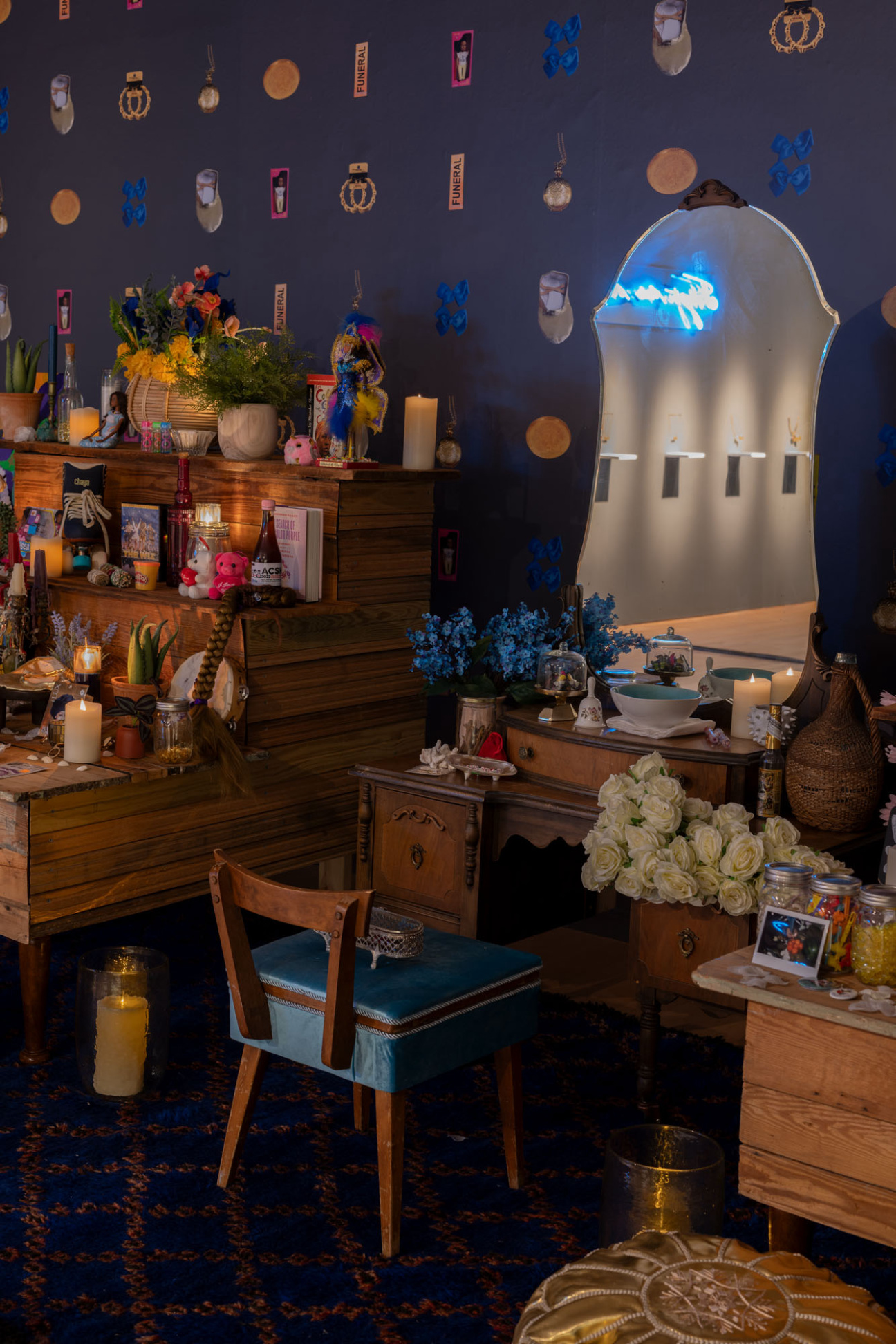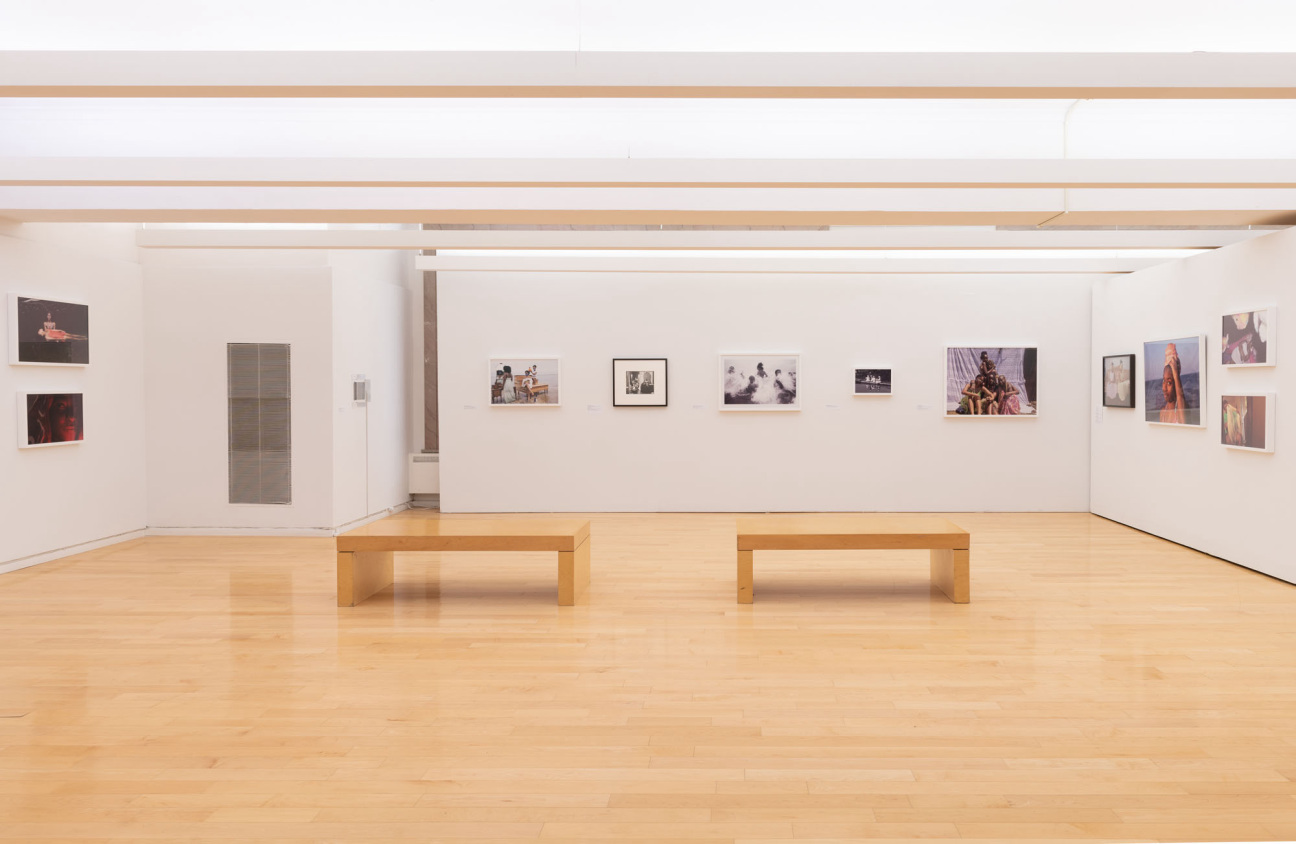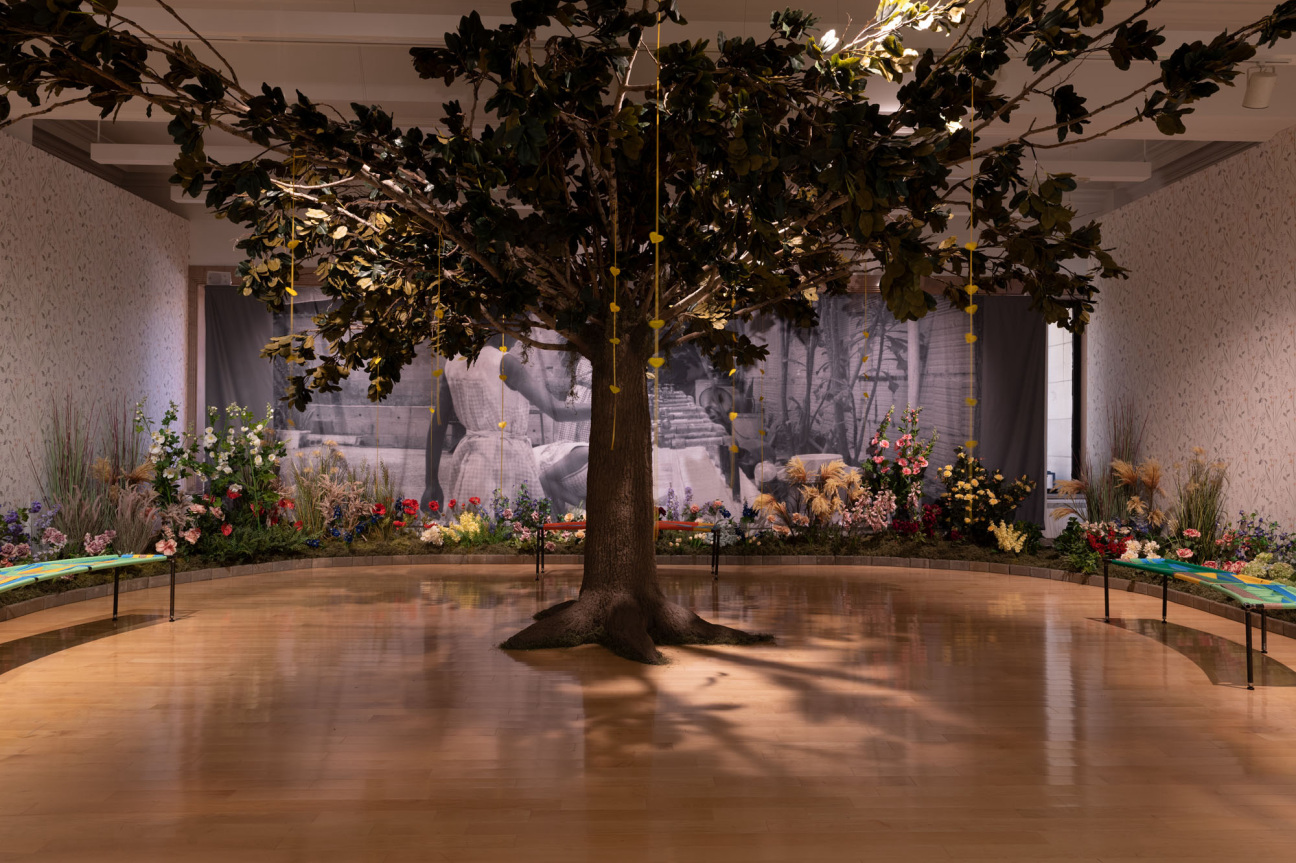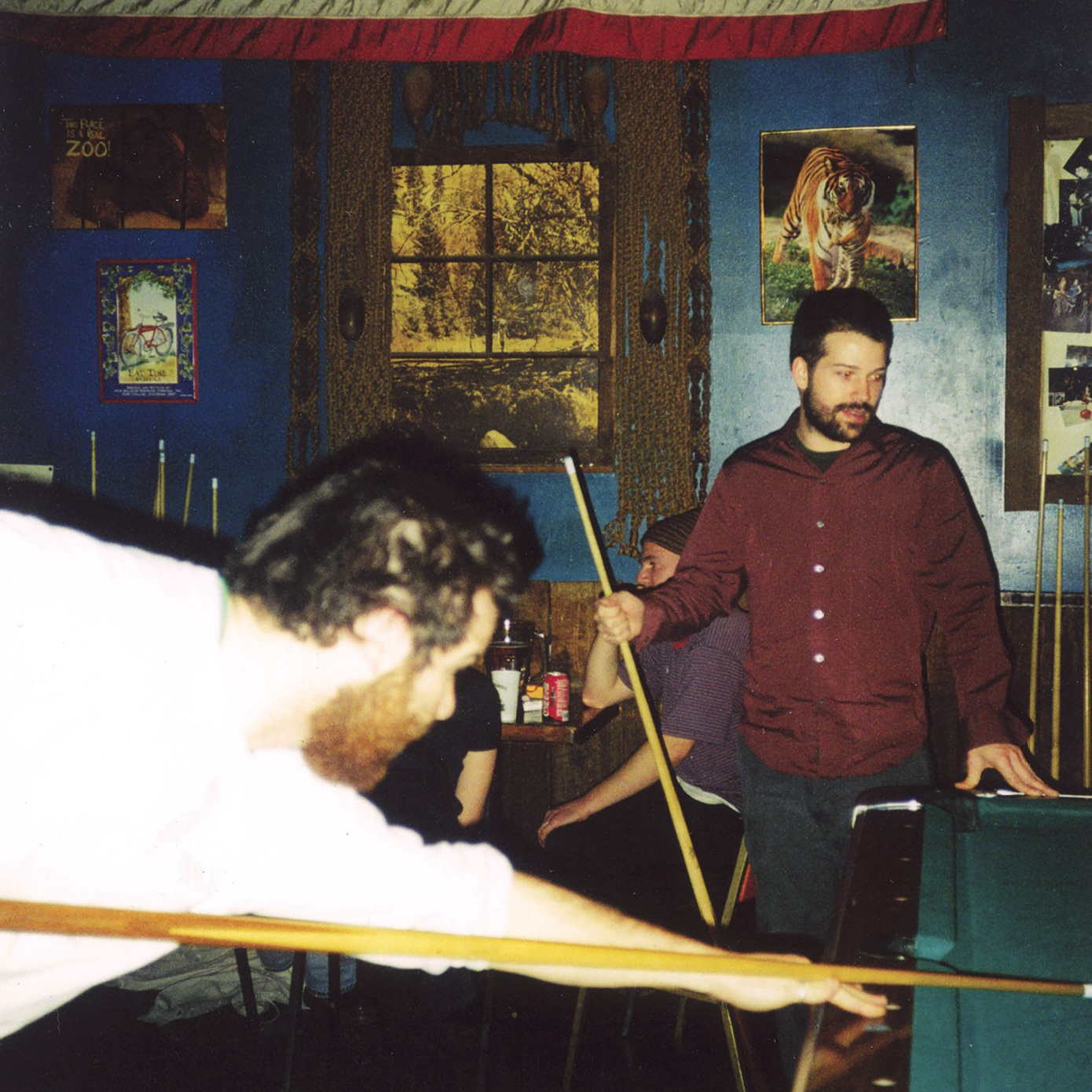
We live in a better world than our ancestors, but there is work to be done and freedom to be gained. For Black girls and women, our livelihood—our safety and joy—exists on a precarious plane, one that can disintegrate in a matter of seconds.
No exhibition captures this sentiment as well as “Freedom Square: The Black Girlhood Altar.” On view at the Chicago Cultural Center through March 10, the roving project is the culmination of decades of work by A Long Walk Home, a national organization of artists, activists, and healers dedicated to eradicating violence against girls and women.
Created by artist and A Long Walk Home founder Scheherazade Tillet and artist Robert Narciso, “The Black Girlhood Altar” honors the legacies of Black victims of violent or sex-based crimes and connects them to the shared experiences of Black girls and women everywhere. Combining photography, sculpture, video, sound, installation, and collected artifacts, “The Black Girlhood Altar” is a sacred space of advocacy and urgent, necessary healing.
The altar concept began more than 20 years ago with Tillet’s sister, Salamishah, a survivor of sexual assault and a co-founder of A Long Walk Home. Tillet took photos of her sister while she reflected at a personal altar that referenced traditional African orishas like Oshun. “I was overwhelmed by what I was witnessing with her healing,” Tillet recalls. “So much had shifted in her identity, including her spirituality.”

When Tillet displayed the photographs and created an altar of her own at art school, she was met with a wave of disclosures from other survivors of sexual assault. (Notably, this was pre-Me Too, when such stories were rarely told, especially by Black women.) “I describe [Freedom Square] as a love letter to Black women and girls, but that initial project was a love letter to my sister, saying, ‘I want to be there for you, I want to help you heal,’” says Tillet. The project ultimately inspired Tillet to found A Long Walk Home.
More than 20 years after her original college project, “Freedom Square: The Black Girlhood Altar,” was born in 2021. It honors the lives and stories of eight highly publicized Black women and girls who were the victims of violent crimes: Rekia Boyd, Latasha Harlins, Ma’Khia Bryant, “Hope,” “Harmony,” Marcie Gerald, Lyniah Bell, and Breonna Taylor. Bell, a victim of domestic violence, was best friends with two of the young participants in A Long Walk Home’s programs.
As “Freedom Square” has grown and moved, new stories and objects from community members have been added to the altar. This iteration introduces the story of “Harmony,” a 10-year-old girl who was abducted and sexually assaulted while walking home. After she escaped, Harmony’s family wanted to relocate; A Long Walk Home paid for five months of shelter until they were able to get into a gender-based violence housing program. “It just revealed, for us, the gaps in the system,” says Tillet. “Her perpetrators are still out there, so there's a lack of justice for all of these people that we are honoring.”

The exhibition is broken into three gallery spaces: Ritual and Prayer, Rest and Recess: The Courtyard, and Call and Response. Each room challenges the viewer to consider how a space can (or cannot) be a place where violence occurs. The rooms feature a mix of large-scale altars, built with help from girls in A Long Walk Home’s programs. They are brimming with flowers, candles, stuffed animals, roller skates, baby dolls, and other ephemera. The Rest and Recess room includes the Rekia Boyd Tree, designed by Narciso and modeled after a tree in Douglass Park where Boyd was killed by an off-duty Chicago police officer.
Sound also plays an important role: in one instance, a literal bird call punctuates the silence. Tillet was motivated to include this detail after visiting the sites where some of the subjects died, like Breonna Taylor’s home and Chicago’s Douglass Park. She was struck by the ordinariness of the environments.
“They’re never the spaces [where] you think these things can happen,” Tillet says. “I was just so shocked about birds chirping. Like someone could be killed in their sleep where birds are chirping. It doesn’t seem like those things can actually exist.”

“The Black Girlhood Altar” proves these spaces, however small, and these lives, even anonymized, hold significance. In the wake of the 2020 George Floyd social uprisings, many cities around the country have begun to rethink their approaches to monuments and cultural memory. Whose stories deserve to be told and retold in the public sphere? And why have we memorialized people who have caused irreparable harm to others? As the fight for racial equity has more recently fallen out of favor within many institutions, the work of “The Black Girlhood Altar” is more necessary than ever. Tillet and A Long Walk Home are working to remind us that the tragedies are not long gone. The conversation does not end when a story has left the news or the traditional wheels of justice have stopped turning.
“Although it’s a really specific and important issue, I think it's also a universal issue, which is healing and honoring,” Tillet adds. “We've all experienced loss. As part of being humans, we process grief and trauma. This can be a tool that [others] have to help them sort out the world and injustices of the world around us.”
If time is a construct, what occurred in the past resonates in the present. And hopefully, with work like “The Black Girlhood Altar,” it will motivate us to create change for the future.
“Freedom Square: The Black Girlhood Altar" is on view through March 10, 2024 at the Chicago Cultural Center.




